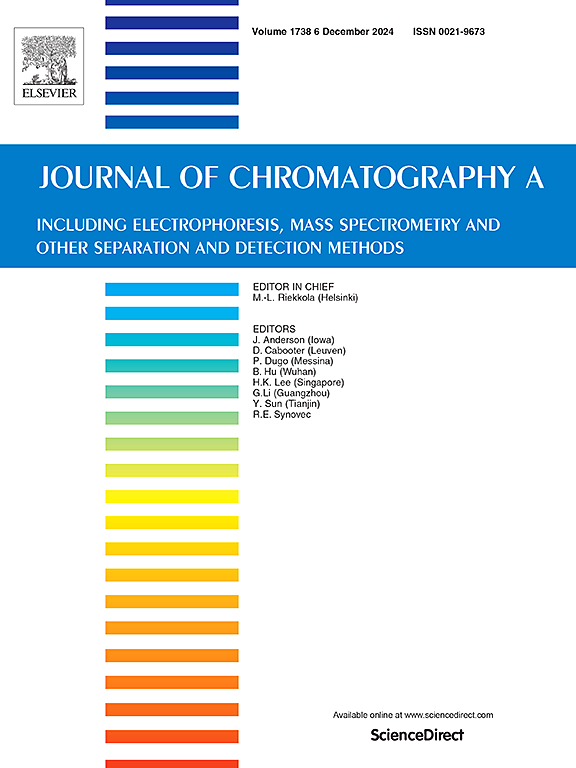Thermal transformation of CBD, CBDA, and Δ9-THC during e-cigarette vaping: Identification of conversion products by GC–MS
IF 3.8
2区 化学
Q1 BIOCHEMICAL RESEARCH METHODS
引用次数: 0
Abstract
The use of electronic cigarettes (e-cigarettes) has gained popularity worldwide for reducing the unpleasant odors and flavors of smoking marijuana. However, due to the high vaporization temperature of the heating coil in e-cigarettes, cannabinoids could be converted into secondary cannabinoid products, potentially causing unintended psychological and harmful effects. A lab-built impinger and aerosol collection device was prepared to study the thermal transformation of cannabinoids during e-cigarette vaping, optimizing collection conditions according to variations in coil wattage, cartridge oil, and collection solvents. Thermal conversion of individual cannabidiolic acid (CBDA), cannabidiol (CBD), and Δ9-tetrahydrocannabinol (Δ9-THC) in e-cartridge liquid was performed with increasing coil power from 45 W to 105 W. Collected aerosol solution was derivatized with trimethylsilyl reagents and analyzed by gas chromatography-mass spectrometry (GC-MS) scan mode. Thermal vaping profiles of individual authentic cannabinoids were studied according to the variation of coil power of the e-cigarette. During the CBDA vaping process of the e-cigarette, most of the acidic CBDA was converted to neutral CBD through thermal decarboxylation and further degraded to produce several thermal products. Several interesting psychoactive Δ8-iso and Δ9-THC isomers, and cannabichromene (CBC) and CBD quinone (CBDQ) were observed from the vaping process of CBDA and CBD. In the case of Δ9-THC vaping, psychoactive hexahydrocannabinol (HHC) derivatives and cannabinol (CBN), were produced via thermal reduction and oxidation. These thermal products were identified by comparing retention times and mass spectra of authentic standards and interpreting their mass spectra. The amounts of most thermal products were increased with increasing coil power from 45 W to 105 W. In contrast, potentially harmful CBDQ was found to be highest amount at 45 W and decreased with increasing coil power. From the profile data and identification results, thermal transformation pathways of cannabinoids during the vaping process are proposed. This study will provide important information on the formation mechanism of thermal conversion products and basic guidance for risk assessment of Cannabis oil vaping by e-cigarette.
求助全文
约1分钟内获得全文
求助全文
来源期刊

Journal of Chromatography A
化学-分析化学
CiteScore
7.90
自引率
14.60%
发文量
742
审稿时长
45 days
期刊介绍:
The Journal of Chromatography A provides a forum for the publication of original research and critical reviews on all aspects of fundamental and applied separation science. The scope of the journal includes chromatography and related techniques, electromigration techniques (e.g. electrophoresis, electrochromatography), hyphenated and other multi-dimensional techniques, sample preparation, and detection methods such as mass spectrometry. Contributions consist mainly of research papers dealing with the theory of separation methods, instrumental developments and analytical and preparative applications of general interest.
 求助内容:
求助内容: 应助结果提醒方式:
应助结果提醒方式:


